Aliens: Colonial Marines – What Went Wrong?
Its story was billed as a true sequel to James Cameron's Aliens. Five years on, we look at where Aliens: Colonial Marines went awry...
Back in 2011, there was every reason to look forward to Aliens: Colonial Marines. Sure, it was a licensed game, and games adapted from movies and TV shows were seldom classics, but Colonial Marines promised to be something rather different.
First, it wasn’t some hurriedly-made cash-in on a hot summer blockbuster; Colonial Marines was billed by Sega and 20th Century Fox as a belated sequel to James Cameron’s 1986 film, Aliens, and its story would be regarded as official canon by Fox. Second, its development was being handled by Gearbox Software, whose Borderlands and Brothers In Arms shooters were generally praised by critics.
Then there was the live presentation of Aliens: Colonial Marines at 2011’s E3. Presented by Gearbox head Randy Pitchford himself, his voice trembling with a note of pride, it gave the world its first glimpse of what the studio had in mind for its much-anticipated shooter set in the Alien universe.
And what a universe it looked like. The sights, sounds and atmosphere all looked authentically like Aliens: the assault weapons wielded by the futuristic soldiers in the title. The setting, the planet LV-426, which looked just like it did in Aliens. Even before the skittering, screeching aliens leapt into view, and the shooting action finally commenced, it was enough to get the goosebumps rising on an Alien fan’s skin.
Pitchford certainly seemed to think he was on to something special.
“I’m freaking out,” Pitchford said gleefully, as the words 20th Century Fox appeared on screen, “because we’re making an Aliens game […] We’re gonna become one of those Colonial Marines and go back to LV-426, investigate Hadley’s Hope, board the Sulaco… we’re really excited about it. We’re big Aliens nerds. It’s a big, exciting thing that we’re really committed to, and proud to be a part of.”
To say that Aliens: Colonial Marines fell short of expectations would be an understatement. When it launched in February 2013, reviews were not only scathing, but also laced with a measure of bafflement. The game certainly looked the part at first, but there were bugs and glitches all over the place; human characters would scream things like, “They’re coming outta the ceiling!” even when nothing was happening. The programming of the xenomorphs was even worse; the creatures would frequently run around in circles, get stuck in the scenery, or just run away from the player entirely.
More strangely still, long sections of the game did away with the aliens completely, and had the player facing off against an army of identical human enemies billed as Weyland Yutani’s private army. Other sections felt half-formed or incomplete; the Loader, the yellow lifting suit that Sigourney Weaver so memorably wielded in Aliens’ third act, felt unpleasant to use and was abandoned almost as soon as it was introduced.
As gifs of xenomorphs glitching through walls and comically waving their arms about began to filter around the web, it became increasingly clear that something had gone wrong behind the scenes. Not only did Colonial Marines look unfinished, but it also looked notably worse than the demo (billed as in-game footage) shown off about 18 months earlier. It certainly didn’t look and feel like a game developed over the course of almost six years. So what exactly went wrong?
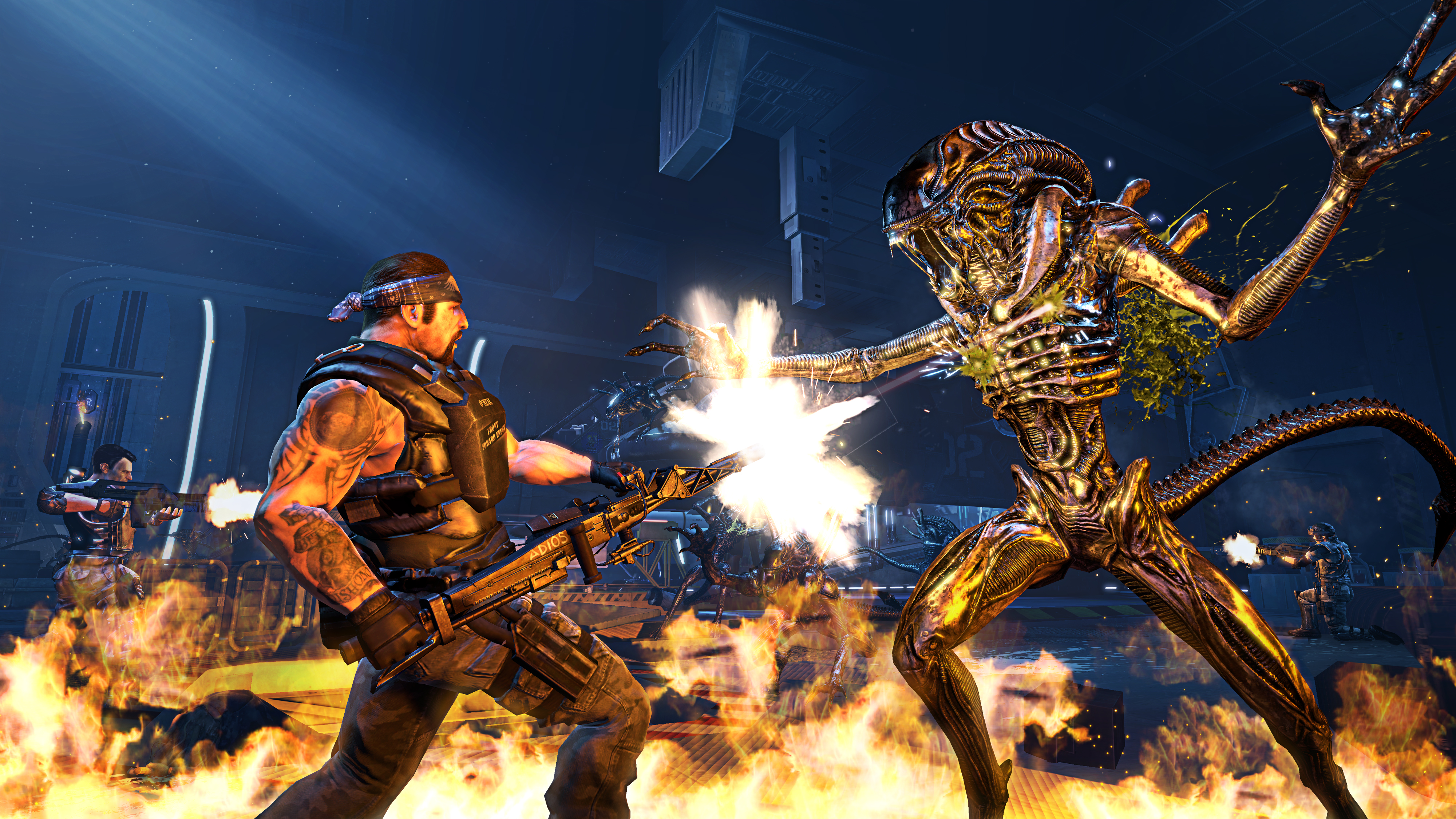
Although Sega announced Colonial Marines in late 2006, the ink was still drying on the contract between the publisher and Gearbox Software. Back then, Gearbox was in the process of making Borderlands, which came out in 2009; partly as a result of this early production on Colonial Marines appeared to be quite tentative – in 2012, Pitchford told Gamasutra that it “began building prototypes” in 2007.
Indeed, the entire project was almost cancelled before it had even properly begun; when Sega was hit by a financial slump in 2008, it axed a proposed Aliens RPG then in the works at developer Obsidian, and there were rumours that Colonial Marines would also be cancelled.
Sega soon refuted those rumours – the game was instead postponed from its original 2009 release but behind the scenes, it appears that something else was happening. According to Kotaku‘s sources, Gearbox made a major decision in 2009: it outsourced work on Colonial Marines to an external developer, TimeGate. This way, the sources claimed, Gearbox could concentrate on making a sequel to its then-new hit, Borderlands.
TimeGate had form in the first-person shooter genre, having worked on expansions for the F.E.A.R. franchise and striking out with its own, original FPS, Section 8, in 2009. Gearbox had, it seemed, developed assets for Colonial Marines by the time TimeGate got to work on it in late 2010 or early 2011; there was clearly a commitment to making the game design match the 1986 movie, since Gearbox had hired futurist designer Syd Mead to help develop additional set designs for the game.
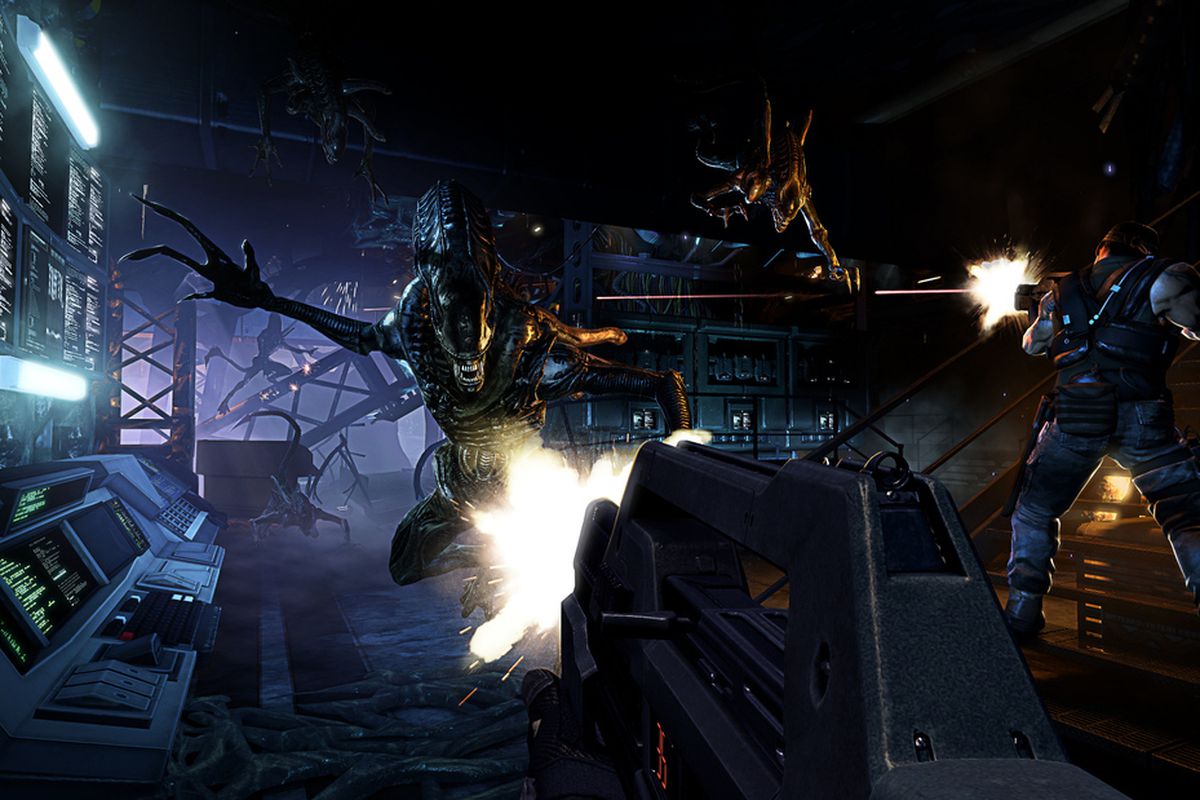
When TimeGate started working on what was then codenamed Pecan, however, it seems that Gearbox hadn’t expended a great deal of time on the engine itself. This was somewhat worrying, given that Gearbox had announced a release date of spring 2012. TimeGate had approximately one year to get the shooter into a playable state.
So while TimeGate worked on the single-player campaign, Bearbox was working on the multiplayer element, while another external studio, Demiurge, was given the task of working on both DLC and a port for the then-popular Nintendo Wii (the Wii edition would later be axed). According to more than one outlet with inside knowledge of the situation, though, the production of Colonial Marines remained rocky – Pitchford later admitted, in an interview with IGN, that making the Aliens game was “a slog.”
According to Kotaku‘s sources, the script was still being written and rewritten even as levels were being coded and designed. As a result, a number of missions were planned out, constructed and then promptly scrapped – including an escort mission with a scientist who turns out to be a mole working for Weyland Yutani.
On Reddit, a poster claiming to have worked on Colonial Marines during this period backed up this story. Writing in 2013, the anonymous poster described a game in a “pretty horrid state.”
“[The] campaign didn’t make much sense, the boss fights weren’t implemented, PS3 was way over memory […] campaign maps were completely redesigned from scratch.”
To add to the pressure, the relations between Sega and Gearbox appeared to be fraying. Sega had become frustrated by the game’s repeated delays, and were also making changes to the story – including the addition of a female Colonial Marine character akin to Vasquez from Aliens. (Sega reportedly also insisted on adding the armies of white-clad human soldiers.)
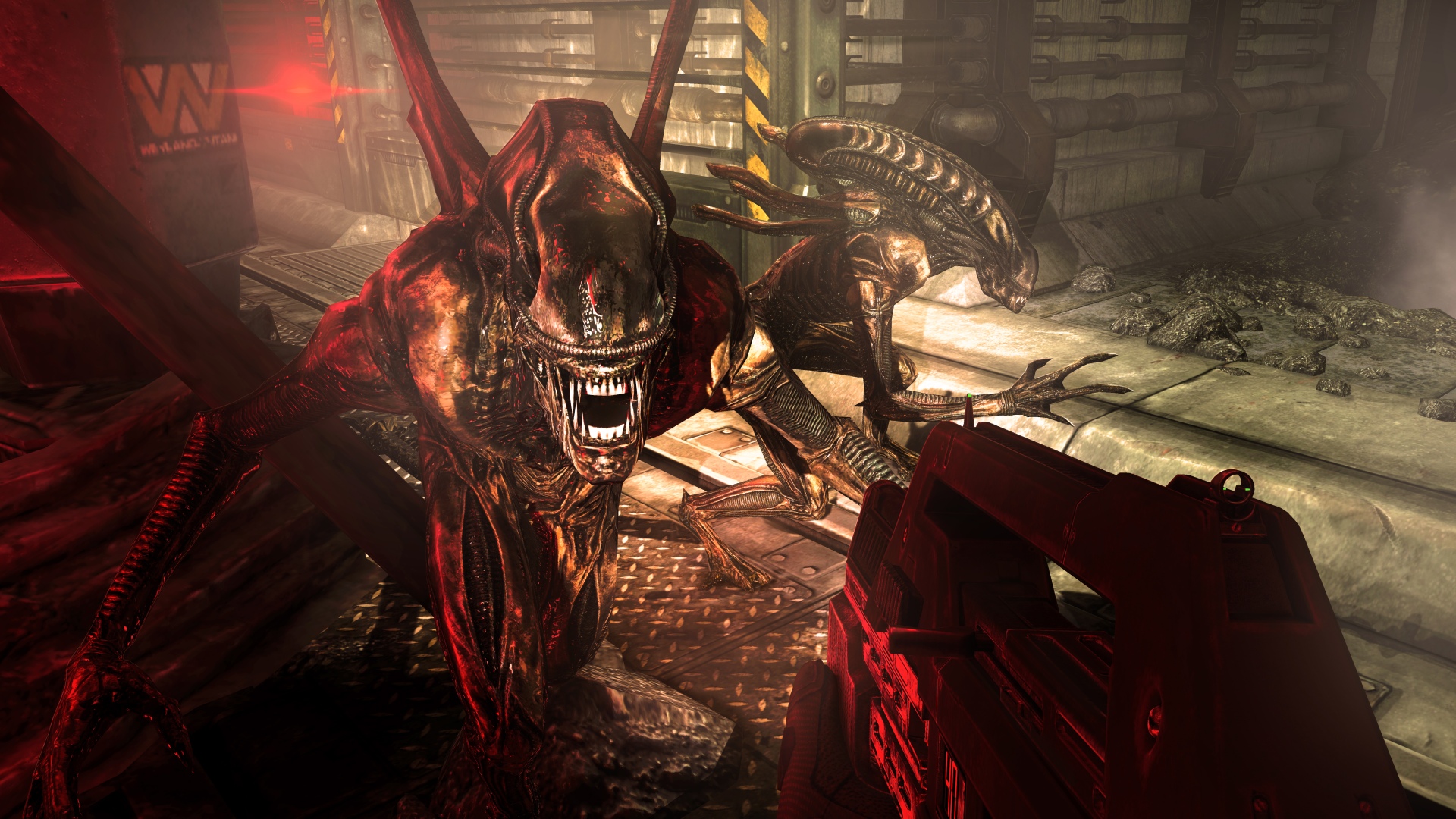
With a further delay pushing Colonial Marines‘ release from the spring of 2012 to the first quarter of 2013, the game’s makers were beginning to run out of time. Gearbox reportedly took Colonial Marines back in-house in 2012, and while it wasn’t happy with what had been made up to that point, it was committed to getting the game completed by the following year.
As one Kotaku source put it, “The game feels like it was made in nine months and that’s because it was.”
Gearbox then reportedly doing the best it could to get Colonial Marines up to scratch.
“Considering that Sega was pretty close to taking legal action against [Gearbox], asking for an extension wasn’t an option, and so Pecan crash-landed through certification and shipping,” the Reddit poster continued. “Features that were planned were oversimplified, or shoved in (a good example of this are challenges, which are in an incredibly illogical order). Issues that didn’t cause 100% blockers were generally ignored, with the exception of absolutely horrible problems. This isn’t because GBX didn’t care, mind you. At a certain point, they couldn’t risk changing anything that might cause them to fail certification or break some other system. And so, the product you see is what you get.”
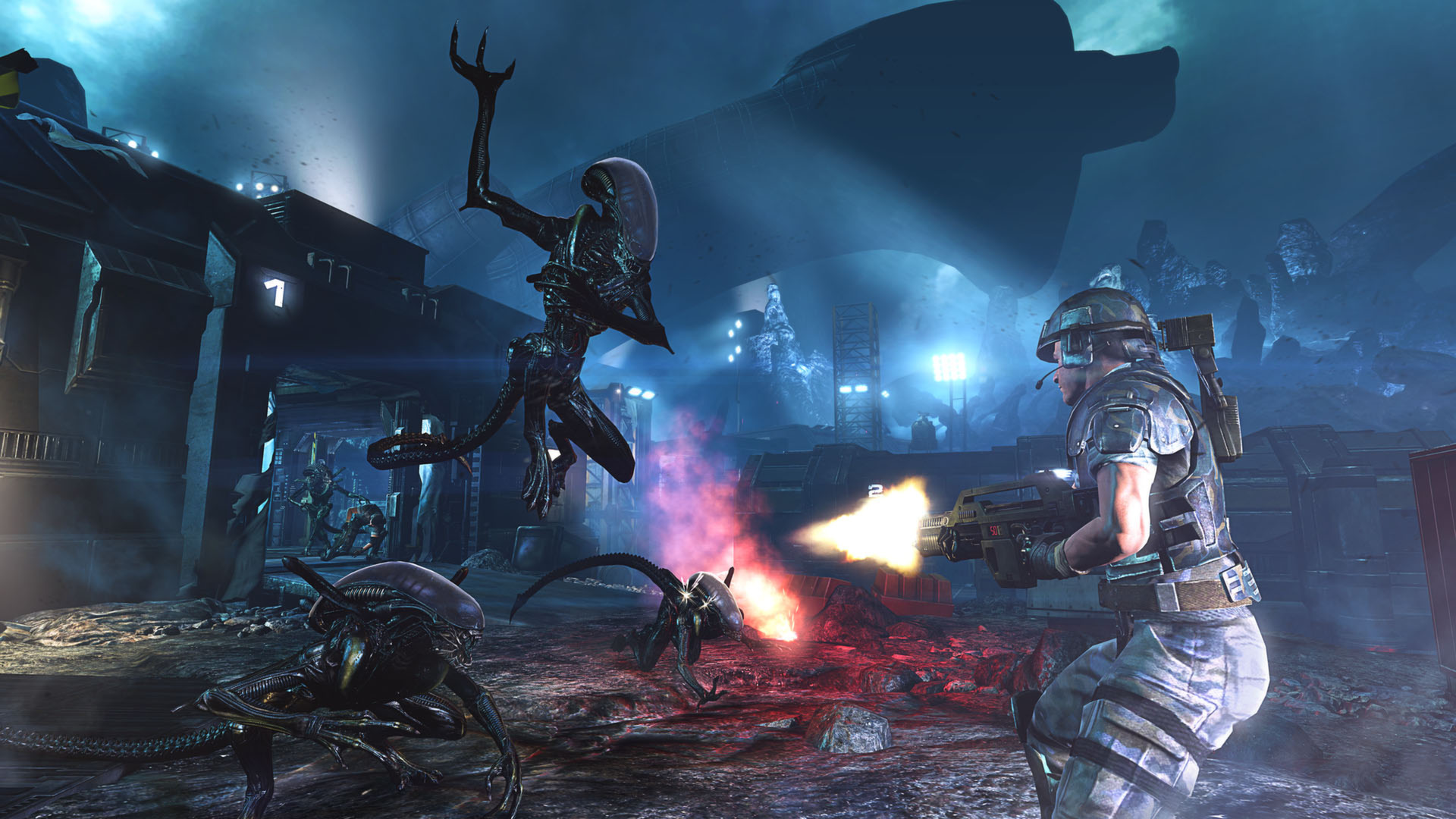
Evidence of Colonial Marines‘ rushed path to release can still be found in its code. As was verified in July 2018, a single typo in the xenomorphs’ coding was at least partly responsible for some of their glitchy, comical movements. In this line of code, the word “Tether” is misspelled:
ClassRemapping=PecanGame.PecanSeqAct_AttachXenoToTether -> PecanGame.PecanSeqAct_AttachPawnToTeather
Correcting the spelling mistake results in a marked improvement in the aliens’ movements. It’s a lasting sign of how fraught those final months before release might have been.
As for the way Colonial Marines looked – well, the E3 demo was created to run on a top-end PC. And with the Xbox 360 and PlayStation 3 unable to display the same fire and particle effects with the fidelity of a cutting-edge gaming PC, it was inevitable that the console editions had to receive something of a visual downgrade. All the same, the glaring disparity between all versions and the demo was pretty marked, and was, it seems, another symptom of a project in crisis – there simply wasn’t time to refine everything before launch.
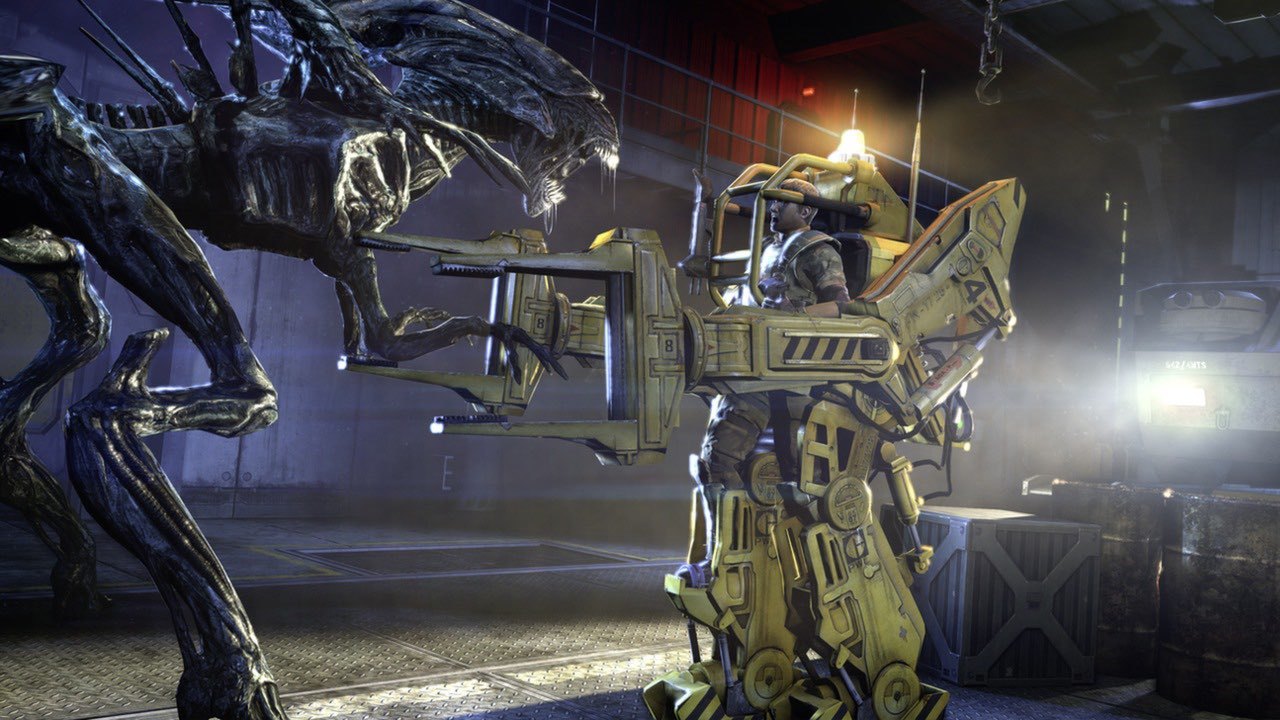
When Colonial Marines appeared in 2013, the game quickly became infamous. Stories of the game’s development soon emerged, though Pickford resolutely stuck by what his studio had handed over. According to Pickford, TimeGate had worked on “probably about 20 or 25 percent of the total time”, but at least admitted that “if you take [Gearbox’s] preproduction out of it, their effort’s probably equivalent to ours.”
Whatever the percentages were, the fact remained that Colonial Marines‘ launch was an ugly one. Aggregate scores were low (Pickford maintains that it’s still a “seven out of 10”). An ultimately fruitless class action lawsuit was filed against Sega and Gearbox for false advertising, claiming that the demos shown off by the two companies didn’t match up to the finished game.
Worse still, the fractious relationship between Sega and Gearbox burst out into public view. In response to that lawsuit, Gearbox claimed that it had just served as a contractor, and hadn’t been involved in Colonial Marines‘ marketing; Sega fired back that it was a joint effort, and that Pitchford had a tendency to reveal things he wasn’t supposed to; a thread of emails, made public as part of the legal case, repeatedly talk about “persistent panel leaking” and information coming out when Sega wasn’t expecting it to, from the involvement of actor Michael Biehn to the game’s budget (circa $40 million).

Not long after Colonial Marines‘ launch, TimeGate sadly closed down. For his part, Pitchford claimed in 2015 that he lost “somewhere between $10-15 million” on Colonial Marines, though he still maintains that the game is nowhere near as bad as critics said it was. When Eurogamer asked whether Gearbox might apologize for Colonial Marines, as 343 Studios had with Halo 5 and Master Chief’s absence, Pickford’s response was unequivocal.
“Apologize for what?” Pickford said. “Earlier in the conversation I said I’m sorry if you didn’t like it. I want you to like it, and I failed if you didn’t.”
For all the anger and recrimination buzzing around Aliens: Colonial Marines, there remains the underlying sense of a missed opportunity. The game may have been bug-ridden and messy, but there were slivers of something better struggling to emerge; the background designs, music and sound effects all looked and sounded the part. Colonial Marines, for all its faults, clearly isn’t just another terrible game.
Had Colonial Marines been handled differently, it’s just possible that the game could have emerged not as a jerky disappointment, but as the love-letter to Cameron’s classic film that fans were roundly hoping for.